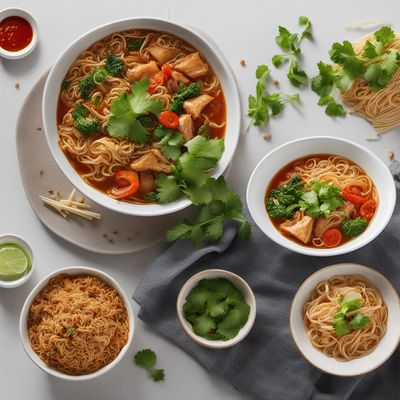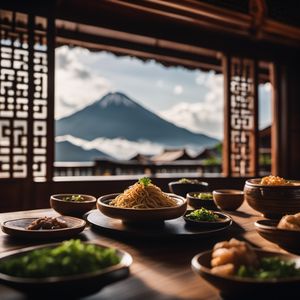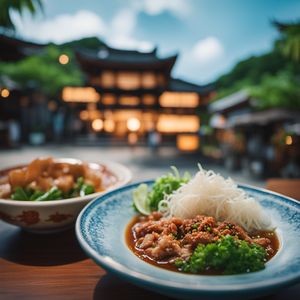
Dish
Kitakata ramen
Kitakata ramen is made with a clear shoyu broth that is flavored with soy sauce and other seasonings. The noodles are thick and curly, and have a chewy texture. The dish is topped with slices of tender chashu pork, bamboo shoots, and green onions. Some variations may also include a soft-boiled egg or nori seaweed. Kitakata ramen is a light and refreshing meal that is perfect for warm weather.
Origins and history
Kitakata ramen originated in Kitakata, Japan in the mid-20th century. It is said to have been created by a local chef who wanted to make a lighter and more refreshing ramen dish. Today, it is a popular dish in Kitakata and can be found in ramen shops throughout Japan.
Dietary considerations
Kitakata ramen is not suitable for vegetarians or vegans due to the use of pork broth and meat toppings. It is also high in sodium and calories, so it should be consumed in moderation.
Variations
There are many variations of Kitakata ramen, including a spicy version made with chili oil and a seafood version made with a fish-based broth.
Presentation and garnishing
Kitakata ramen is typically served in a large bowl with the noodles on the bottom and the toppings arranged on top. The dish is often garnished with green onions and nori seaweed. Some shops may also add a sprinkle of shichimi togarashi for extra spice.
Tips & Tricks
To make the perfect bowl of Kitakata ramen, be sure to use high-quality soy sauce and other seasonings to flavor the broth. The noodles should be cooked until they are al dente and the toppings should be arranged neatly on top of the noodles. For an extra burst of flavor, add a splash of vinegar or lemon juice to the broth before serving.
Side-dishes
Kitakata ramen is often served with a side of pickled vegetables or a small salad. Some shops may also offer fried rice or tempura as a side dish.
Drink pairings
Kitakata ramen pairs well with a cold beer or a glass of white wine. The light and refreshing broth also pairs well with a crisp and citrusy sake.
Delicious Kitakata ramen recipes
More dishes from this category... Browse all »

Abura soba
Japanese cuisine

Ants Climbing a Tree
Chinese cuisine

Asahikawa ramen
Japanese cuisine
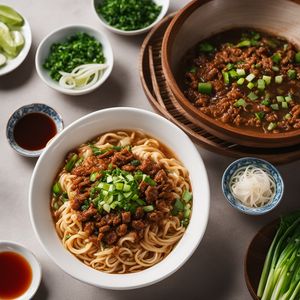
Biangbiang Noodles
Chinese cuisine
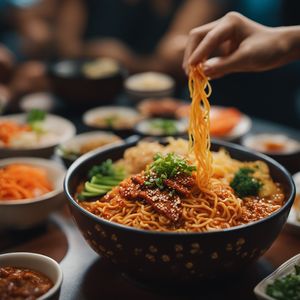
Bibim guksu
Korean cuisine

Bukkake udon
Japanese cuisine

Burnt Miso Ramen
Japanese cuisine

Bánh canh
Vietnamese cuisine
